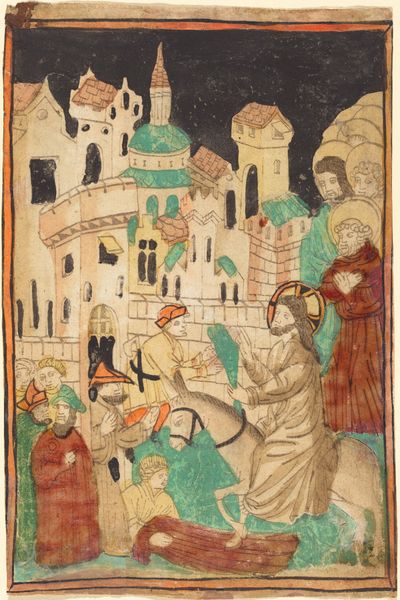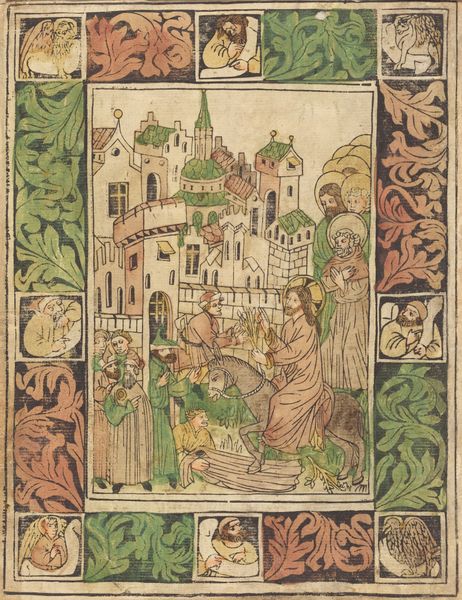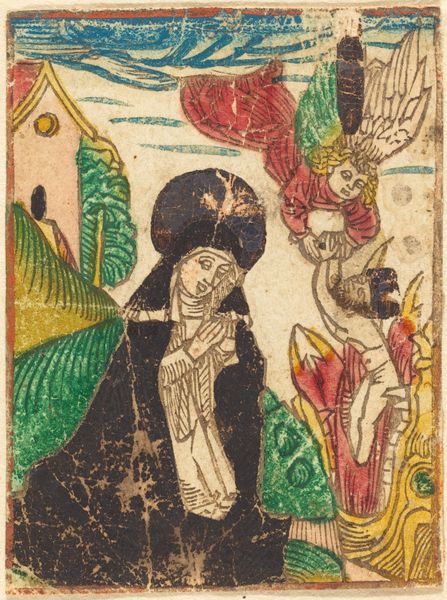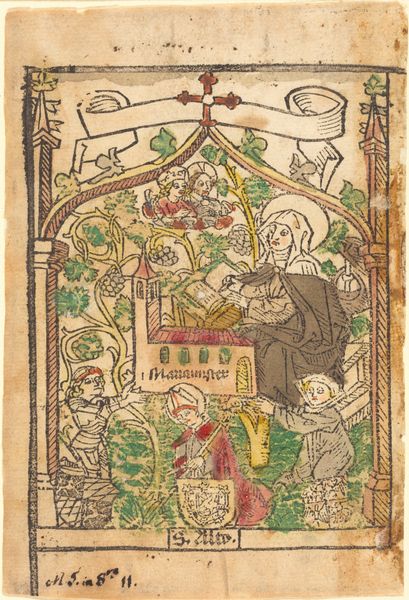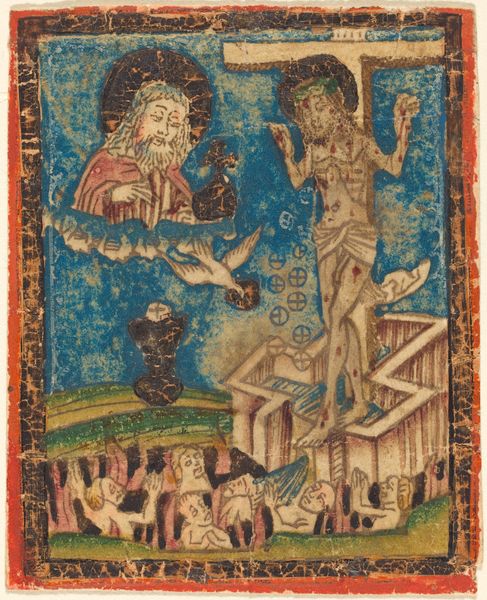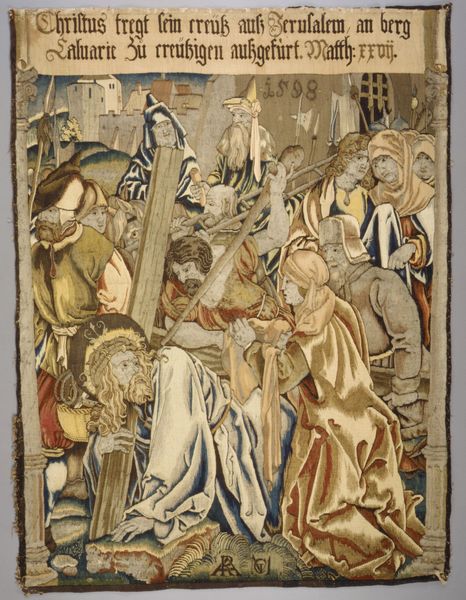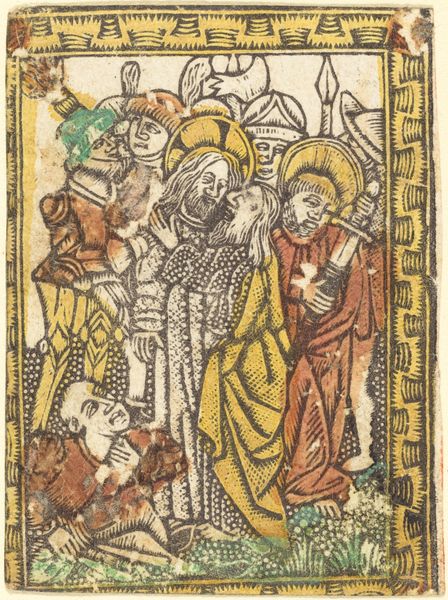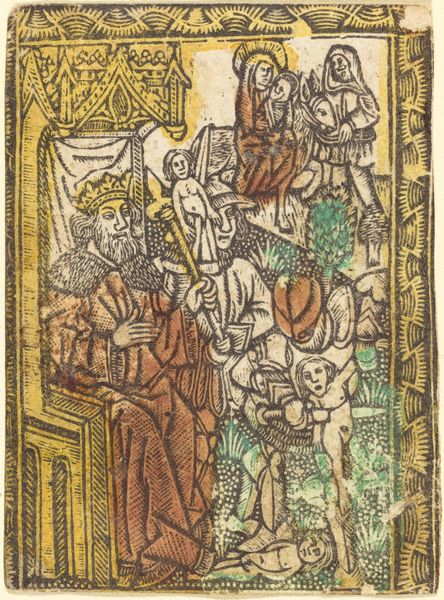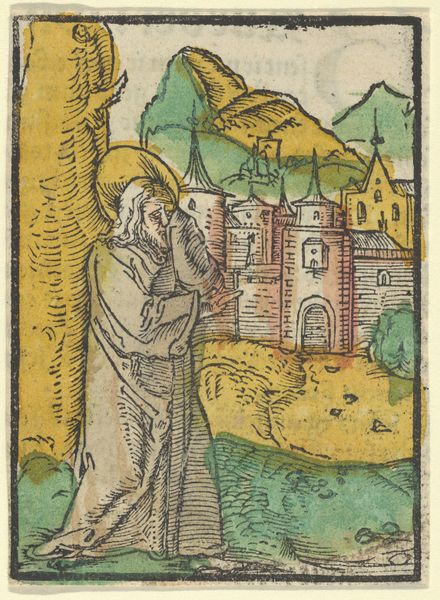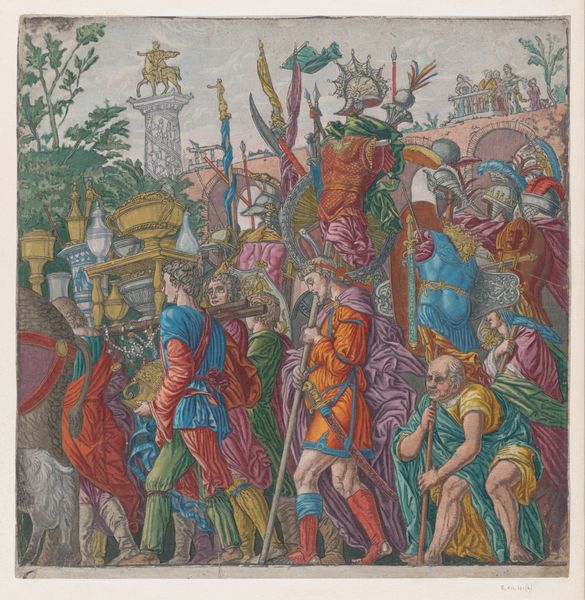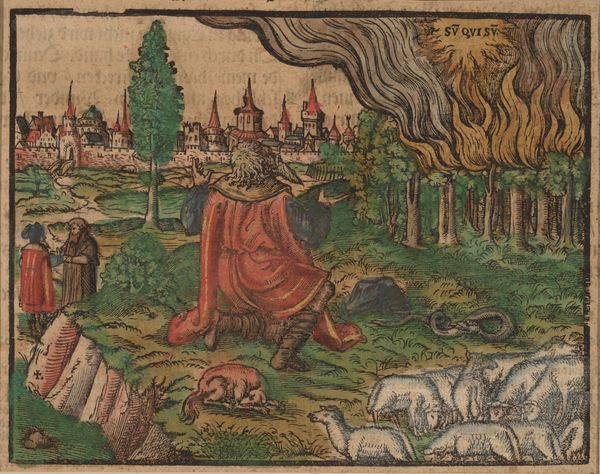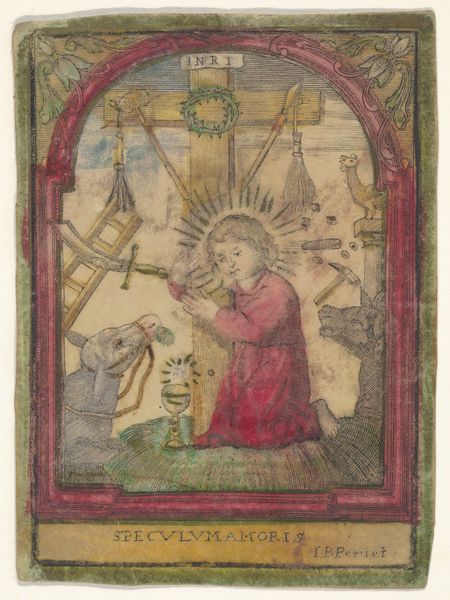
print, woodcut
#
narrative-art
#
pen drawing
# print
#
woodcut
#
northern-renaissance
Copyright: National Gallery of Art: CC0 1.0
Curator: This is a Northern Renaissance woodcut titled "The Transportation of the Holy House of Loreto," dating back to 1494, by an anonymous artist. Editor: Oh, wow! It looks like a whimsical architectural model being delicately ferried across a fantastical landscape. The slightly tilted perspective adds a surreal touch. Curator: Indeed. Let's observe the formal elements. The composition is quite striking: we have the floating Madonna figure bookending "Nazareth" and "Therulate," grounding the narrative and bifurcating the sacred spaces depicted in this relatively busy composition. Editor: The texture is fascinating—you can practically feel the roughness of the woodcut and the precision of the linework. Plus, the slightly off-kilter coloring gives it an enchanting medieval vibe, as if glimpsed through a stained-glass window. Curator: Absolutely. Notice the strategic use of line. It not only defines the forms of the architecture but also guides the eye, directing our gaze towards the Madonna aloft and back to the terrestrial structure. Editor: There's also an interesting play between the earthly and the divine. Angels in action on the ground look as if they labor for the church while figures on clouds do so with celestial powers and some floating label action up above. The effect is charmingly uncanny, blending piety and folklore, right? Curator: Precisely! This work invites interpretation, drawing attention to the interplay between the mundane and the divine. It provokes thoughts of medieval society, and in a structuralist interpretation of signs, points to their obsession with the symbolic power of objects and architectural forms. Editor: Thinking of this work makes me consider my own journey in spirituality and art. Curator: It speaks volumes through careful formal arrangement, revealing the layered semiotics within its composition.
Comments
No comments
Be the first to comment and join the conversation on the ultimate creative platform.
